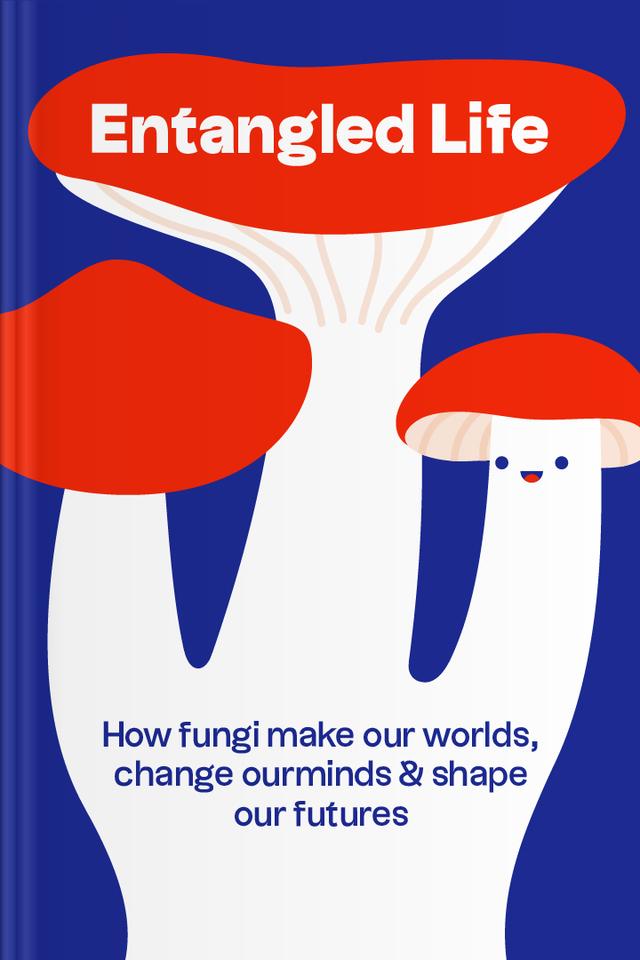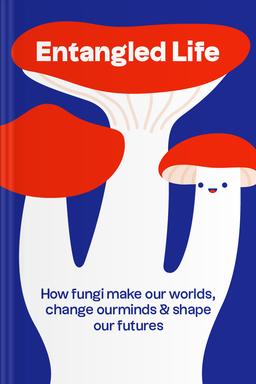You’ll learn
- How ancient fungi shaped today's world
- The unseen networks beneath your feet
- Why fungi might be key to future tech
- About fungi's role in health and consciousness
russia has launched a full-scale war in Ukraine. Donate to support Ukraine and protect the world’s peace.

first KEY POINT
Fungi are quiet, mysterious, but influential companions in almost every aspect of our lives. For more than a billion years, they have been supporting the vital activity of plants, cleaning the environment from pollution, becoming components of medicines and food, and affecting animals and humans. Although their influence is so extensive, they live a secret life, and more than 90% of their species have not been studied yet.The mushroom kingdom is ancient and remarkable. Without the activity of fungi, there would be no plants, which they helped emerge from the water 500 million years ago; they still support 90% of terrestrial plants by providing them with nutrients.Fungi exist imperceptibly in almost every place on Earth — on the seabed, in deserts, in the north, and in our bodies. In fact, even the most extreme environments can be suitable for fungi to survive. They reproduce by spores, and many fungi create new ways to thrive, making themselves attractive to humans and animals to carry their "seeds" all over the world.Human life is also surprisingly intertwined with fungi; we have learned to cooperate with mushrooms. For example, in 1928, Alexander Fleming discovered that a specific mold produced penicillin, which became the first antibiotic and saved many lives. In 2017, researchers rebuilt the diet of Neanderthals and found that an ancient man with a toothache consumed penicillin-producing mold. Perhaps, people realized its medicinal properties long before the official discovery.Scientists have studied and described only 6% of all types of fungi. And while humans are getting closer to the mysteries of mushrooms, the latter continue to support life on Earth, combining plants into a large-scale ecosystem, the so-called “wood wide web.”
Merlin Sheldrake admitted that the mushrooms changed his mind every time he encountered them. The plant and animal kingdoms receive attention from scientists, while fungi play the role of "gray cardinals" — powerful, full of potential, but secretive. In this summary, you will read about the extraordinary abilities and benefits of fungi, learn more about the connections between living things and reconsider your views on the exciting power of wildlife.
second KEY POINT
We hardly ever thought of fungi as intelligent beings, and, even for scientists, the study of mushrooms is undefined. However, behind the seemingly inconspicuous shell of fungi lies the ability to solve problems and learn.Our journey into the world of fungi begins with truffles. Our first association with this type of fungi is their price: two kilograms can cost 12,000 euros, or over $1,300.00! Secondly, truffles' unusual taste and aroma make them a delicacy. The attractiveness of a truffle emerged out of their need to reproduce; the animals that procure the truffle spread its spores and prolong its existence. These fungi’s chemical elements lure animals and tell them that the mushroom is safe to eat. Smell has become part of our interaction with the mushroom; fragrances created by mushrooms have become part of our desire to be attractive. For example, the resin of the Agar tree, which appears as a result of fungal contamination, is used to manufacture perfumes.The fragrant fruiting bodies of truffles result from mushroom "mating" — the hyphae of one mycelium system merges with the hyphae of another (the mycelium is an artificially created root system of the fungus, and the hyphae are its filaments). Also, If the hyphae do not find a tree partner, they will die. Mycorrhizal trees provide carbon to truffles, and fungi help the tree’s roots absorb nutrients better. In the endless jumble of various organisms in the soil, plants use chemical compounds to find each other.Sheldrake joined the truffle hunters to watch the process of finding them. He observed the hunters enter the forest dressed in camouflage to avoid attracting the attention of other hunters and accompanied by dogs trained to locate the mushrooms. According to Sheldrake, the dogs even looked like truffles. The hunters had been searching for the cherished mushrooms for a while when one of the dogs jumped off the trail and began to dig the ground; it had found a truffle, and its aroma was unusual and intense.

Continue reading with Headway app
Continue readingfirst KEY POINT
second KEY POINT
third KEY POINT
fourth KEY POINT
fifth KEY POINT
sixth KEY POINT
seventh KEY POINT